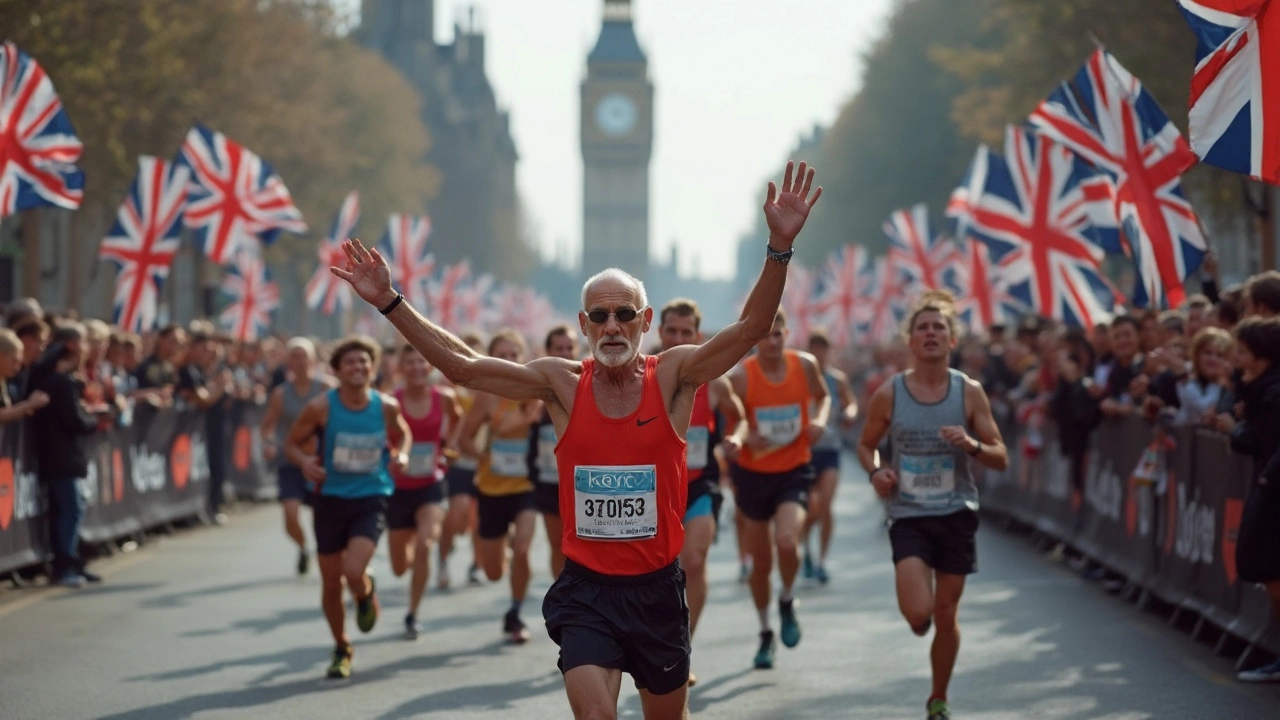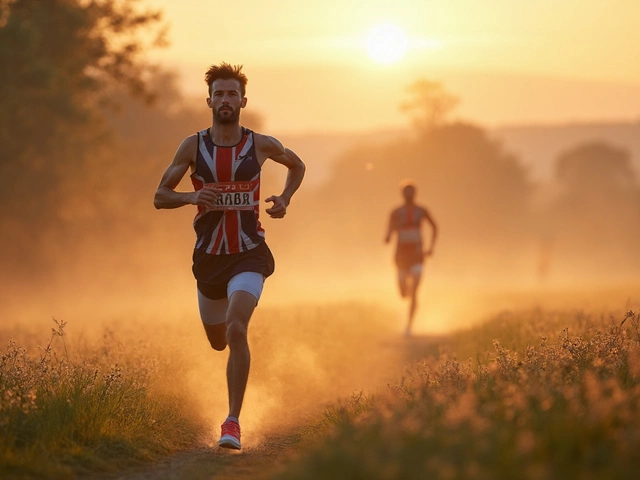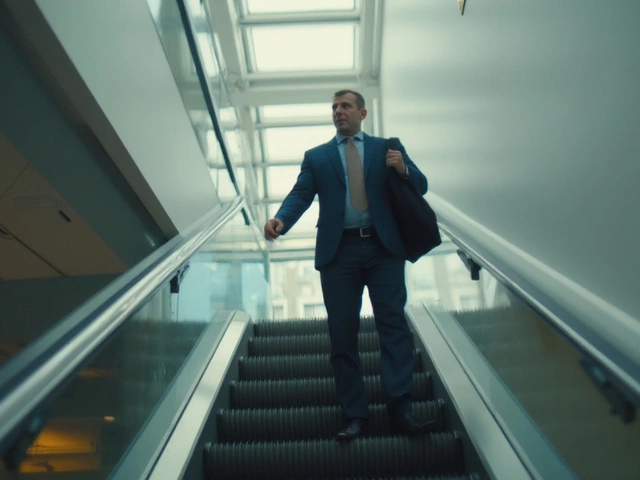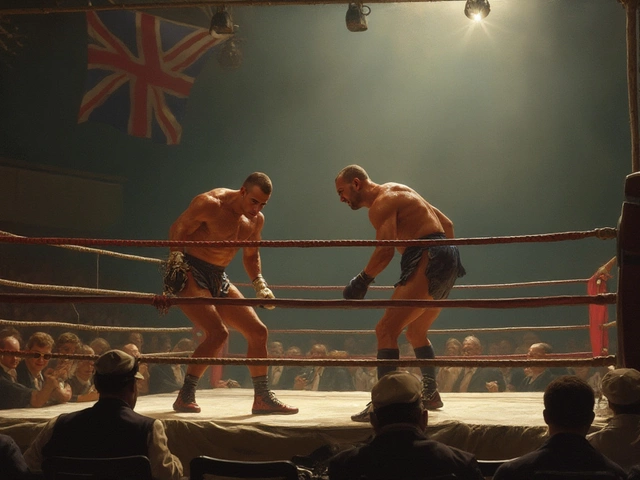Slowest Marathon Time Ever: The Surprising True Story
The slowest marathon time ever isn’t just a number that’ll make you scratch your head—it’s a wild, true story that flips our whole idea of what it means to run a marathon.
Here’s the deal: most people only hear about world records and lightning-fast finishes. But there’s an official marathon time out there that took over 54 years to complete. No, that’s not a typo. Japanese runner Shizo Kanakuri started the 1912 Stockholm Olympics marathon but never finished due to exhaustion. Decades later, after being tracked down, he was invited back and officially crossed the line in 1967, with a time of 54 years, 8 months, and 6 days. Talk about persistence!
So if you’ve ever worried about being too slow, you’re nowhere near this record. But there are other wild stories, plus real strategies for anyone worried about coming last—or not making it at all. Training at your own pace isn’t just possible; it can work in your favor. Some of the biggest lessons in marathoning are hidden behind the slowest splits and the most surprising finishers. Stick around to see why crossing the line, no matter when, still matters.
- The Infamous Slowest Finish
- The Unexpected Backstory
- Why Finish Lines Matter More Than Finish Times
- Time Limits and Cutoffs Explained
- Survival Tips for Slow and Steady Runners
- What the Slowest Finish Taught the Running World
The Infamous Slowest Finish
If you thought a marathon finish always meant crossing the line sweaty at the end of a long, hard day, you haven’t heard about Shizo Kanakuri. He holds the slowest marathon time ever: 54 years, 8 months, and 6 days. It sounds like a joke, but it’s stamped right in the history books.
Back in 1912, during the Stockholm Olympics, Kanakuri was a promising young runner from Japan. The marathon that day was brutal—temperatures soared over 30°C (about 86°F), and hardly half the field finished. Kanakuri struggled with the heat and, worried about his well-being, quietly dropped out and returned to his quarters. But he didn’t officially notify the judges, so nobody knew where he went. Swedish authorities listed him as missing for decades, and the story even made its way into local legend.
Fast forward to 1967. Someone tracked Kanakuri down in Japan and invited him back to Stockholm to finish what he started. Kanakuri, with a good sense of humor about it all, returned and ran the last bit of the course to cross the finish line. His official time? An unbelievable 54 years.
Here’s a quick look at how Kanakuri’s time compares to other famous marathon records:
| Runner | Marathon | Time | Year |
|---|---|---|---|
| Shizo Kanakuri | Stockholm Olympics | 54 years, 8 months, 6 days | 1912-1967 |
| Eliud Kipchoge | Berlin Marathon (fastest ever) | 2:01:09 | 2022 |
| Average 1st-time marathoner | Various | 4:30:00 | — |
This cheeky record proves you don’t need to be fast to be a legend. And honestly, most marathon runners who finish at any pace earn the same medal as the top runners. So, anyone nervous about finishing slow? Just remember: you’re probably beating a world record holder in at least one category!
The Unexpected Backstory
If you thought every marathon record was all about speed, Shizo Kanakuri’s story proves otherwise. In 1912, Kanakuri was one of the fastest runners in Japan and set off for Stockholm to represent his country at the Olympics. Just getting there was a marathon in itself: he traveled by boat and train for over 18 days. That alone would tire out anyone, but add the fact that the Swedish summer was way hotter than Kanakuri expected, and you’ve got the perfect recipe for disaster.
The Stockholm Olympic marathon started at 1:48 p.m., in searing heat. Out of 68 starters, over half never finished. Kanakuri collapsed mid-race and, confused and embarrassed, was quietly taken in by a local family to recover. He didn’t tell race officials and simply returned to Japan thinking he’d failed—so the organizers never knew what happened to him. For decades, he was listed as missing. Imagine running a slowest marathon time that was so slow, people thought you’d vanished!
Here’s a quick breakdown:
| Year | Event | Details |
|---|---|---|
| 1912 | Olympic Marathon | Kanakuri starts but doesn't finish; disappears. |
| 1967 | Finish | Invited back to Stockholm; crosses the finish line (time: 54 years, 8 months, 6 days). |
It wasn’t until 1967, when Swedish reporters tracked him down, that Kanakuri got a second shot. At 76 years old, he crossed the finish line where he’d left off—to a hero’s welcome. His "official" time is the stuff of legend, making everyone who’s ever worried about a DNF (Did Not Finish) breathe just a bit easier.
Kanakuri’s story gets tossed around to remind us that marathons aren’t just about the clock. They’re about showing up, and sometimes, getting back up—no matter how long it takes. He didn’t win gold, but he definitely became a legend for never, technically, quitting. Running historians and race fans love this example because it’s real proof that every runner, even the slowest, shapes the marathon’s story.
Why Finish Lines Matter More Than Finish Times
If you ask any seasoned marathoner or even the folks cheering at mile 25, they’ll tell you it’s the finish line—not the clock—that makes the biggest impact. Seriously, about 99% of marathoners worldwide never chase a podium spot or try to break a world record, but they sure do remember that feeling of crossing the finish.
One interesting fact: the average marathon finish time for recreational runners is about 4:21:49 for men and 4:48:45 for women, according to a 2023 RunRepeat study that analyzed data from over 3 million runners. But races still draw people who finish well beyond these times, showing how much marathoning embraces all abilities.
Finishing a marathon is actually a pretty rare achievement. Less than 1% of the world’s population has ever finished one. It doesn’t matter if you’re flying or crawling—finishing is brag-worthy.
“To finish a marathon is a victory in itself. The clock just tells a story, but the finish line proves you got to the end,” – Bart Yasso, retired Chief Running Officer at Runner’s World.
People run for all sorts of reasons:
- Personal health goals
- Supporting a charity
- Marking important life milestones
- Checking something off their bucket list
The slowest marathoners often get the loudest cheers. In the 2019 London Marathon, the final runner, Caitlin Adams, finished in just over 8 hours. She was greeted with a hero’s welcome from volunteers, staff, and leftover crowds.
| Year | Event | Last Finisher's Time |
|---|---|---|
| 2019 | London Marathon | 8:13:11 |
| 2022 | New York City Marathon | 9:18:57 |
| 2023 | Berlin Marathon | 7:55:20 |
At the end of the day, the slowest marathon time isn’t some shameful stat—it’s proof that someone refused to quit. Next time you see those final runners, remember they’re teaching all of us what finishing really means.
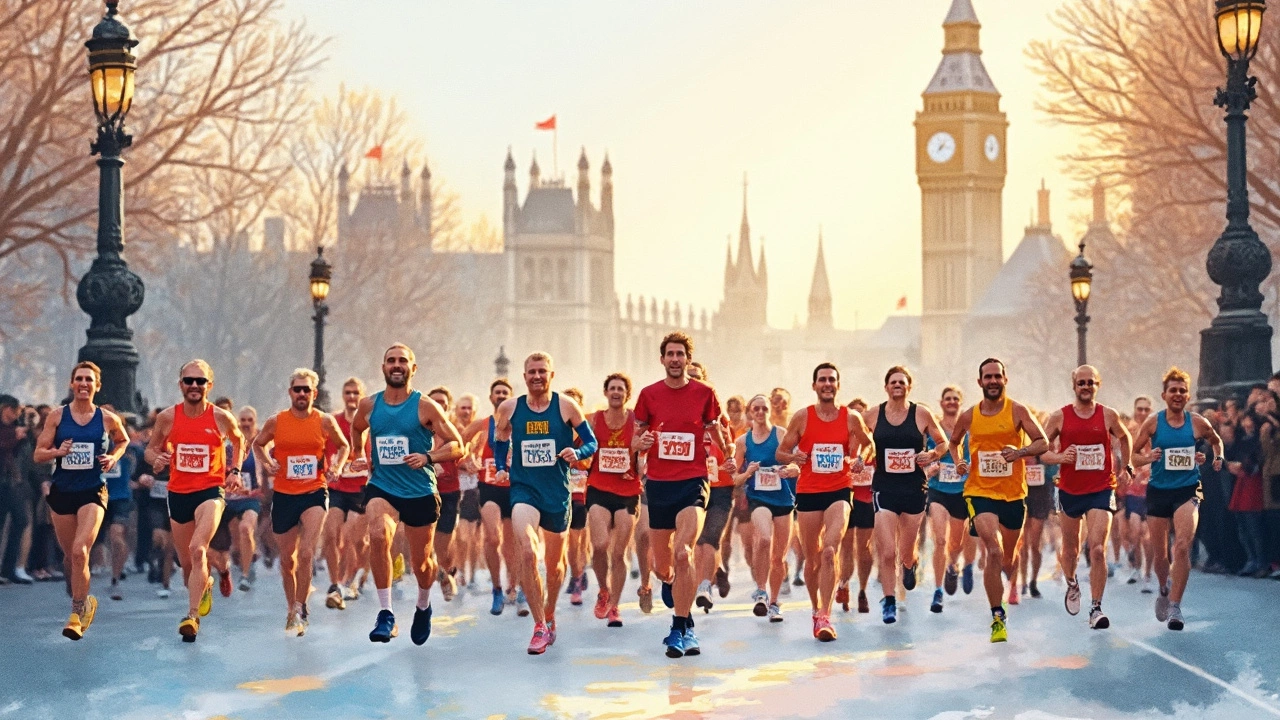
Time Limits and Cutoffs Explained
If you sign up for a marathon, you can’t ignore cutoff times. These aren’t random numbers—every major race has them. For most big-city marathons like New York, Boston, or London, the standard race limit is 6 to 7 hours. Some smaller races might stretch it to 8 hours, and a few will sweep the course even earlier.
The main reason? Cities can’t close roads forever, volunteers and medics have other jobs, and logistics cost serious money. So, when that time limit hits, organizers open roads back up and shut down aid stations. Even the finish line clock might get packed away.
Here’s how it usually works:
- Marathons rarely have just one cutoff—they set a series of checkpoints (every 5K or at halfway), and if you don’t reach it before a certain time, you get asked to leave the course.
- Some races use a “sweeper bus,” which literally follows behind and picks up stragglers. It sounds harsh, but it’s a safety thing.
- For famous races like the slowest marathon time in history, nobody’s making exceptions—nobody gets 54 years anymore. That was a one-off.
- Virtual marathons and charity runs are more relaxed, sometimes letting you take all day, but official in-person marathons stick to their rules.
If you’re nervous about meeting the cutoffs, check your race website before race day—they always post their rules and timelines. Some even have pace teams for slower runners so you know if you’re on track.
The bottom line: if you train for a steady pace (around 14:30 to 16 minutes per mile), you’re likely to make it. Even if you’re not fast, planning helps you stay ahead of the sweep. And if you don’t make it? Plenty of people get pulled from the course and come back next year. The finish line isn’t going anywhere.
Survival Tips for Slow and Steady Runners
If you’re not going for the gold but just want to cross the finish line, you’re in good company—most marathoners worldwide just aim to finish. Here’s the reality: slow runners make up a huge part of every big race, and there’s no shame in taking your time. In fact, if you check stats from major marathons like New York or London, upwards of 20% of finishers come in over five hours.
The biggest mistake slow runners make? Trying to run someone else’s pace. Ignore the crowd surge early on and focus on your rhythm. Many slow runners swear by the run-walk method—alternating a few minutes of running with a minute or two of walking. Olympian Jeff Galloway popularized this, and it works, especially for avoiding burnout later in the race.
- hydration and nutrition are your lifeline. Drink small amounts at every aid station, not just when you feel thirsty. For longer marathons, carry some gels or a banana—low energy leads to big problems in the final third of the race.
- Plan for bathroom breaks. Porta-potty lines get longer as the back of the pack builds up. Time your stops during less busy stations around mile 8 or 16.
- Pick your playlist or podcasts wisely. You’re going to be out there for hours, and music with a steady beat can help you keep moving.
- Watch your clothing. Chafing is brutal if you’re on the course for five hours or more. Anti-chafe balms, moisture-wicking socks, and a baseball cap or buffs for sun protection are worth every penny.
Don’t freak out if you fall behind pace groups. Many races have official pace sweepers and buses, but most allow finishers well past the seven or eight-hour marks, especially in larger events. Always double-check the official cutoff times during your training.
The secret weapon for the slowest marathon time crowd? Mental grit. When the crowd gets thin and you’re dragging past the four-hour mark, remind yourself: you’re on your own journey, and every step gets you closer to the finish—no matter how long it takes.
What the Slowest Finish Taught the Running World
Shizo Kanakuri’s marathon story is legendary not just because of how long it took him, but because it shows what marathoning is really about: getting to the finish line, no matter how long it takes. His 54-year finish time stands out as the slowest marathon time officially recorded. But it’s more than just a quirky stat—it’s a lesson for every runner.
When Kanakuri disappeared from the 1912 Olympic marathon, people thought he had dropped out for good. But he kept running back home in Japan, completed several more marathons in his lifetime, and stayed an important figure in Japanese running. When Sweden invited him back half a century later, he completed the race for real, even making a joke about how the course was “long and tough.” The official Olympic records list his finish as:
| Runner | Event | Finish Time | Year Started | Year Finished |
|---|---|---|---|---|
| Shizo Kanakuri | Stockholm Olympic Marathon | 54 years, 8 months, 6 days, 5 hours, 32 minutes, 20.3 seconds | 1912 | 1967 |
So what did everyone learn from this wild record?
- Marathons are about finishing, not just racing. Kanakuri shows that it’s totally fine to take your time; no one’s keeping score on your pace except you.
- There’s no “failure” unless you give up for good. You can always come back, whether it’s the next day, next year, or even decades later.
- The running community celebrates perseverance as much as speed. When Kanakuri finally crossed the finish, he got a hero’s welcome—not because he was fast, but because he never truly quit.
His story also changed the way people talk about marathon DNF’s (did not finish). Now, when someone doesn’t finish, race organizers and runners know it’s not the end of their story. You can always return to the starting line, in your own way.
Bottom line: if you’re worried you’re running the marathon "too slow," remember this story. The slowest record isn’t something to be embarrassed about. It’s an example of hard-core endurance and personal commitment. That’s what actually counts in running—and in life.
